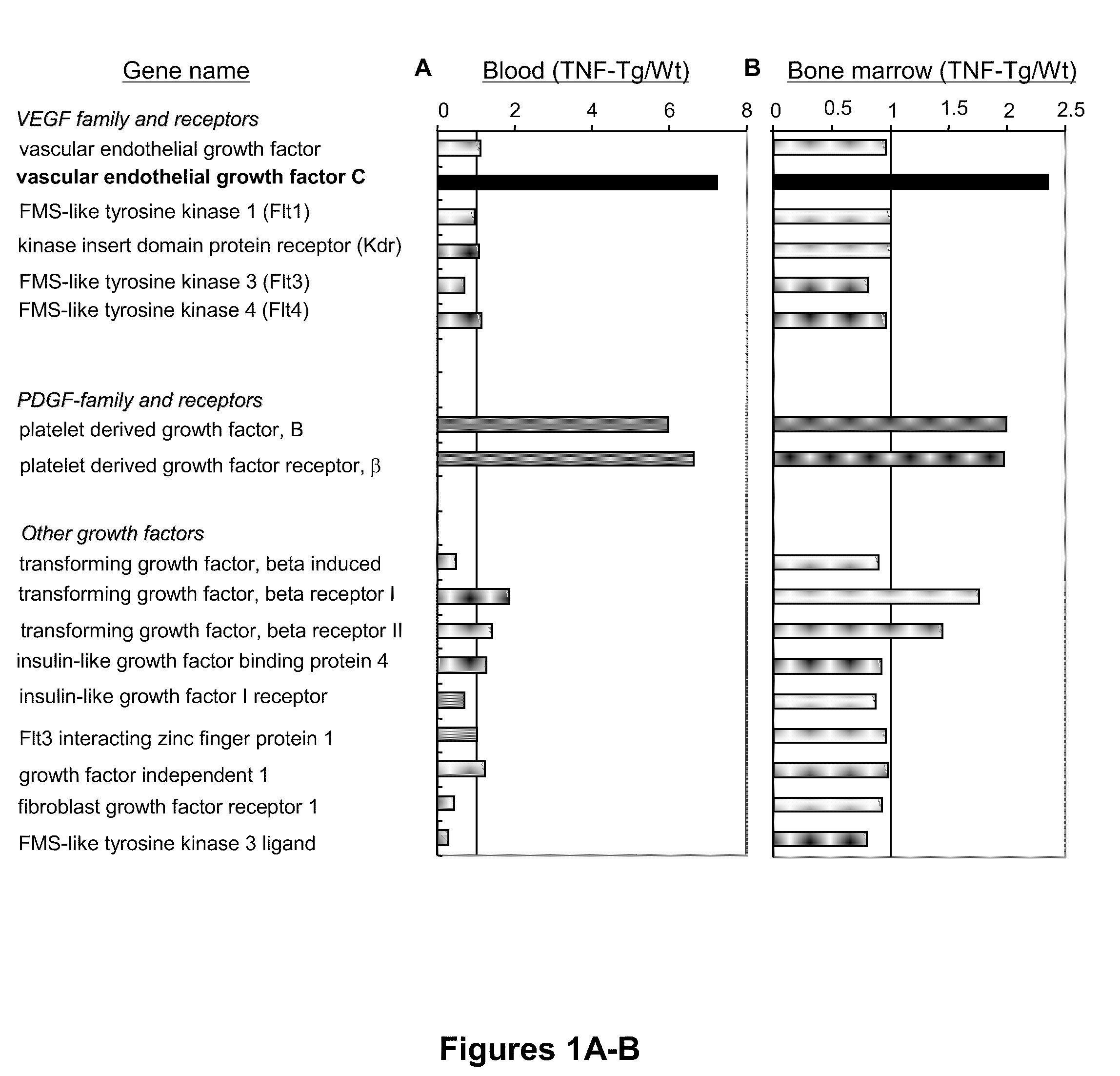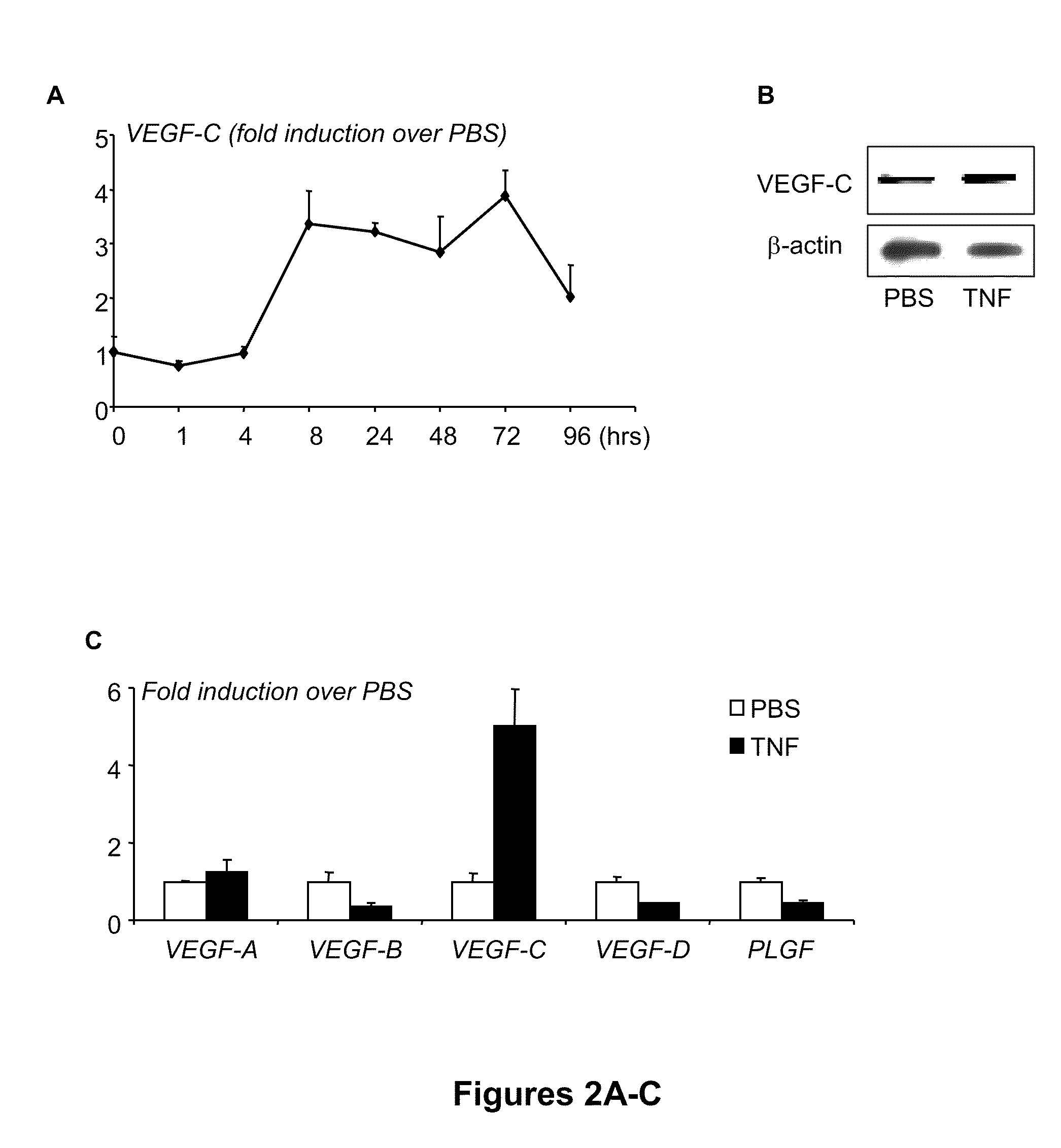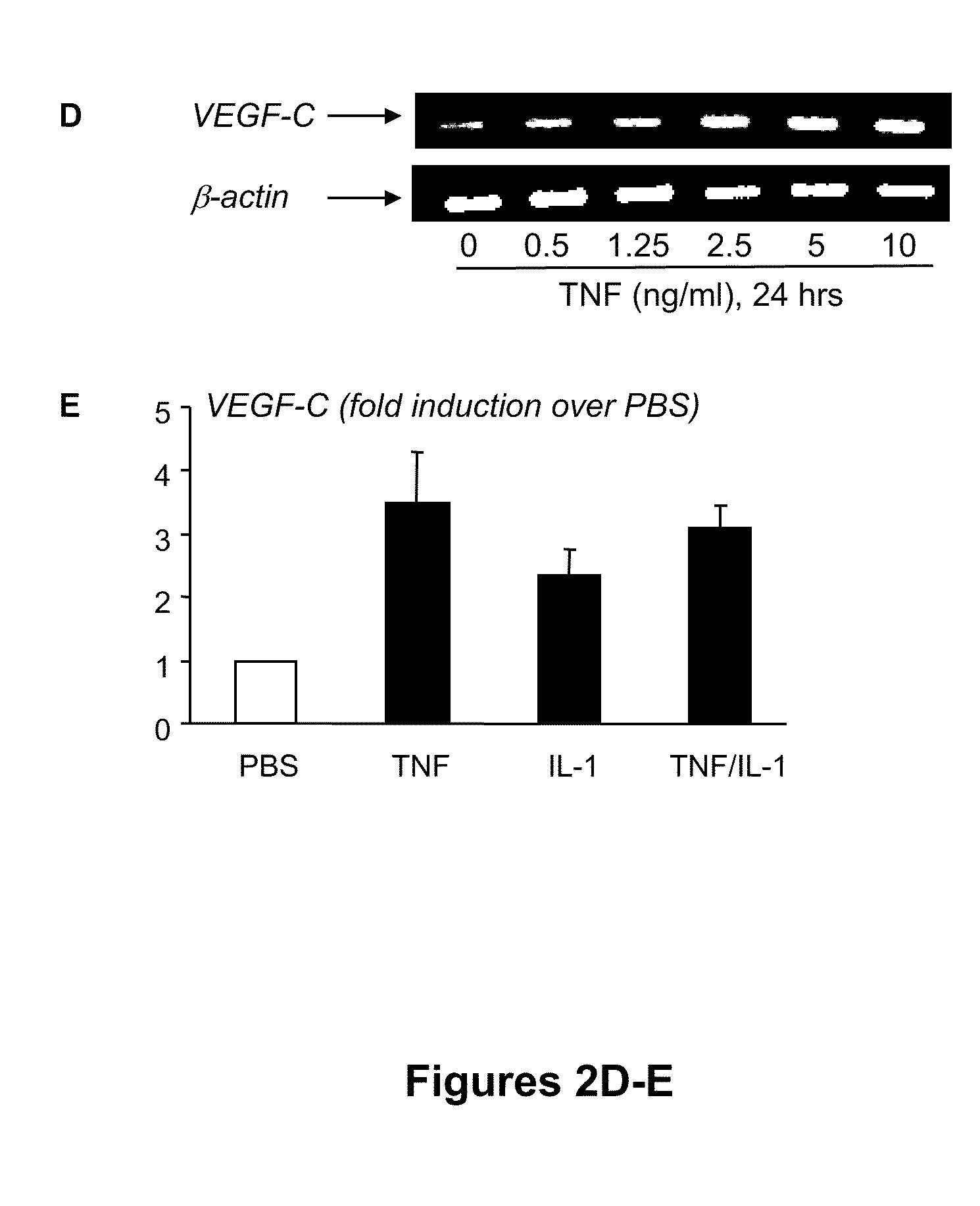Methods and compositions for treating inflammatory conditions
a technology of inflammatory conditions and compositions, applied in the field of methods and compositions for treating inflammatory conditions, can solve the problems of affecting the study of the lymphatic system, affecting the effect of manipulating the lymphatic system as a therapeutic approach for alleviating inflammation, especially joint inflammation, and affecting the healing effect of inflammatory conditions, etc., to stimulate lymphangiogenesis, and reduce the severity of synovitis
- Summary
- Abstract
- Description
- Claims
- Application Information
AI Technical Summary
Benefits of technology
Problems solved by technology
Method used
Image
Examples
example 1
VEGF-C Expression is Upregulated in CD11b+ / Gr-1− / lo Osteoclast Precursors from Tumor Necrosis Factor-Transgenic Mice
[0107]Previous studies demonstrated an increase in circulating OCPs in patients (Ritchlin et al., “Mechanisms of TNF-Alpha- and RANKL-Mediated Osteoclastogenesis and Bone Resorption in Psoriatic Arthritis,”J Clin Invest 111:821-831 (2003), which is hereby incorporated by reference in its entirety) and animals (Li et al., “Systemic Tumor Necrosis Factor Alpha Mediates an Increase in Peripheral CD11b-high Osteoclast Precursors in Tumor Necrosis Factor Alpha-Transgenic Mice,”Arthritis Rheum 50:265-276 (2004), which is hereby incorporated by reference in its entirety) with arthritis, and that OCP frequency is reduced in response to anti-TNF therapy, suggesting that OCPs may play important roles in the pathogenesis of arthritis (Xing et al., “Circulating Osteoclast Precursors: A Mechanism and a Marker of Erosive Arthritis,”Curr Rheumatol Rev 1:21-28 (2005), which is hereby ...
example 2
Tumor Necrosis Factor Stimulates Osteoclast Precursors to Produce VEGF-C
[0108]To determine whether TNF directly upregulates expression of VEGF-C by OCPs, WT spleen cells were cultured with M-CSF for 3 days to generate OCPs, as described above. The rationale for using spleen cells rather than bone marrow cells is that spleen-derived OCPs are closer to circulating OCPs than bone marrow OCPs in terms of their osteoclast-forming potency (Yao et al., “Osteoclast Precursors Induce their Differentiation to Osteoclasts by Interacting with Bone Matrix and Secreting Cytokines,”JBMR 21(Suppl. 2):S262 (2006), which is hereby incorporated by reference in its entirety) and the increased VEGF-C expression level in circulating OCPs is more than three times higher than in bone marrow OCPs (FIGS. 1A-B). TNF treatment increased VEGF-C mRNA levels by three- to four-fold in a time-dependent manner, beginning at between 4 and 8 hours, suggesting transcriptional regulation (FIG. 2A). It also increased VEG...
example 3
Nuclear Factor-Kappa B Mediates Tumor Necrosis Factor-Induced VEGF-C Expression
[0110]NF-κB is a transcription factor that mediates induction of genes by TNF in many cell types, including OCPs (Zhang et al., “Tumor Necrosis Factor-Alpha (TNF) Stimulates RANKL-Induced Osteoclastogenesis via Coupling of TNF Type 1 Receptor and RANK Signaling Pathways,”J Biol Chem 276:563-568 (2001), which is hereby incorporated by reference in its entirety). NF-κB also mediates heregulin-beta-1-induced VEGF-C expression in human breast cancer cells (Tsai et al., “Up-Regulation of Vascular Endothelial Growth Factor-C in Breast Cancer Cells by Heregulin-Beta 1. A Critical Role of p38 / Nuclear Factor-Kappa B Signaling Pathway,”J Biol Chem 278:5750-5759 (2003), which is hereby incorporated by reference in its entirety). There is a putative NF-κB-binding element, GGGGTCCC (nucleotides 8-18 of SEQ ID NO:17, FIG. 3B), at the −108 / −99 region of the mouse VEGF-C promoter, which is at a location similar to that i...
PUM
| Property | Measurement | Unit |
|---|---|---|
| thickness | aaaaa | aaaaa |
| volumes | aaaaa | aaaaa |
| slice thickness | aaaaa | aaaaa |
Abstract
Description
Claims
Application Information
 Login to View More
Login to View More - R&D
- Intellectual Property
- Life Sciences
- Materials
- Tech Scout
- Unparalleled Data Quality
- Higher Quality Content
- 60% Fewer Hallucinations
Browse by: Latest US Patents, China's latest patents, Technical Efficacy Thesaurus, Application Domain, Technology Topic, Popular Technical Reports.
© 2025 PatSnap. All rights reserved.Legal|Privacy policy|Modern Slavery Act Transparency Statement|Sitemap|About US| Contact US: help@patsnap.com



